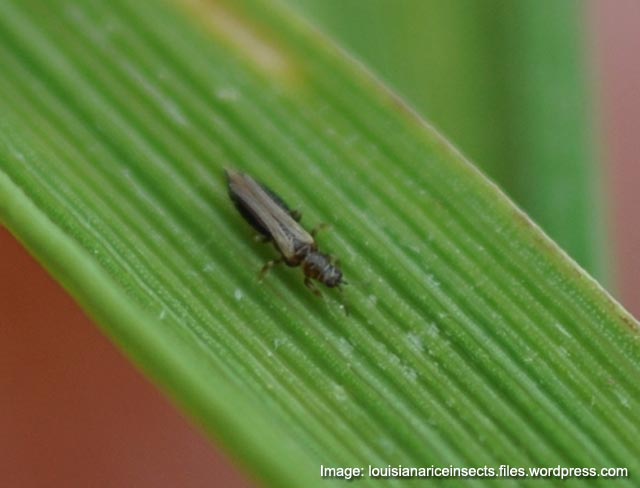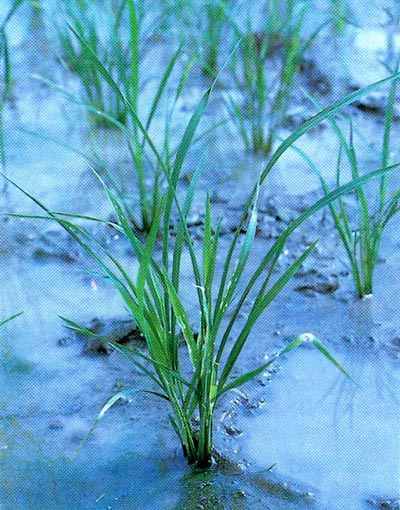Rice thrips
Stenchaetothrips biformis (Bagnall)
 What it does
What it does
Feeding damage caused by thrips causes leaf curling and discoloration.
Why and where it occurs
Periods of dry weather favor the development of the rice thrips. No standing water in the rice fields encourages damage.
These insects are present in all rice environments. In the tropics, the rice thrips becomes abundant in dry periods from July to September and January to March. In temperate areas, the insects migrate and hibernate on graminaceous weeds during the winter season.
The adult thrips are day-flying. They migrate during the day and look for newly planted rice fields and other hosts.
Eggs are laid in the slits of leaf blade tissue. The upper half of the egg is exposed.
Neonate larvae feed on the soft tissues of unopened young leaves.
How to identify
 Check the plants for feeding damage:
Check the plants for feeding damage:
- damaged leaves have silvery streaks or yellowish patches
- translucent epidermis becomes visible on damaged area
- leaves curled from the margin to the middle
- leaf tips wither off when severely infested
- unfilled grains at panicle stage
Rolled leaves are also symptoms of drought. To confirm rice thrips damage, check for the presence of thrip inside the curled leaves.
- cream-colored eggs on leaf tissue with upper half of eggs exposed on leaf surface
- yellow larvae and dark brown adults lacerate the plant tissues
- leaf shows discoloration and rolling, and extensive removal of leaf tissues causes a translucent epidermis to remain
Why is it important
Rice thrips are more serious pests during the dry season. It infests the rice plant during the seedling stage or two weeks after early sowing.
In direct-seeded rice fields in Malaysia, losses can reach 100% when infestation is severe in the first 20 days, after sowing.
How to manage
- Use resistant varieties.
Contact your local agriculture office for an up-to-date list of available varieties. - Flood to submerge the infested field for two days.
- Encourage biological control agents: predatory thrips, coccinellid beetles, anthocorid bugs, and staphylinid beetles.







